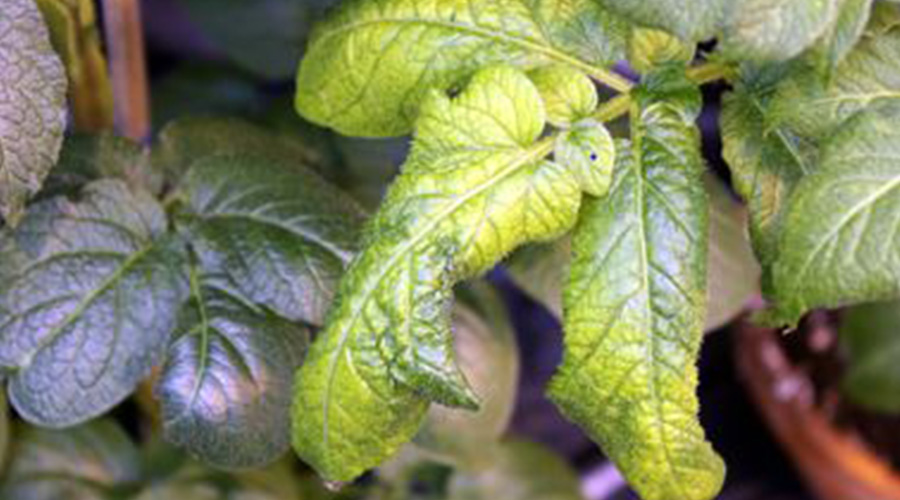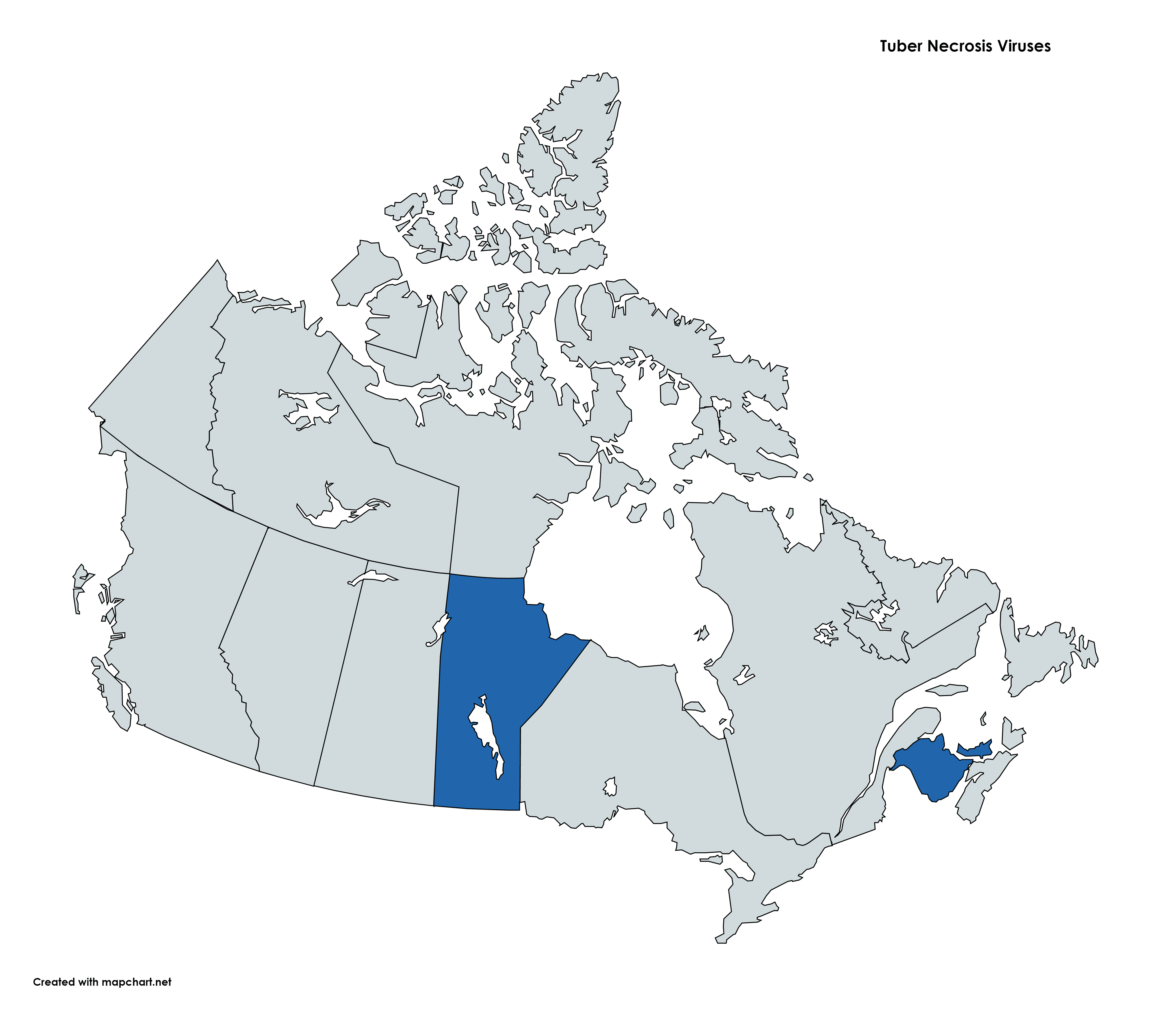
Photo credit: X. Nie
Lead Researcher
Xianzhou Nie | Agriculture and Agri-Food Canada (AAFC), Fredericton, NB
Objectives
To determine the occurrence and significance of potato tuber necrosis-inducing viruses in Canada and develop accurate and efficient procedures to detect the viruses in hosts and vectors; unveil the spread and epidemiology of the viruses, investigate varietal responses to the most prominent tuber necrosis-inducing virus(es), especially the soil-borne potato mop-top virus (PMTV), and identify insensitive and/or resistant cultivars to the viruses.
Early Outcomes of Research
- A field trial on the sensitivity of 11 common potato cultivars and 4 AAFC new releases to PMTV-induced necrosis is on-going. This preliminary result indicates that as storage time increases, the number of ELISA positive and RT-PCR positive tubers increase, consistent with general observation by the industry.
- An analysis of nearly 250 asymptomatic tubers (2018 crop) were received from MB was completed for all four targeted viruses, namely potato mop-top virus (PMTV), tobacco rattle virus (TRV), alfalfa mosaic virus (AMV) and potato virus Y strain NTN (PVYNTN) by PCR and ELISA. Among the samples, 6 tested positive for PMTV by both PCR and ELISA. Interesting, none of the positive tubers exhibited visible spraing symptoms (internal necrosis).
- Six potato cultivars (Innovator, Yukon Gold, Rochdale Gold-Dorée, Chieftain, Shepody and Jemseg) and one breeding clone (F87084) were analyzed for their responses to the alfalfa mosaic virus infection. All tubers of infected Innovator and Shepody plants developed sporadic internal necrotic spots, as did approximately 23% and 8% tubers of infected Yukon Gold and Rochdale Gold-Dorée, respectively. The internal necrosis in AMV-infected tubers appears to depend on potato cultivar rather than on AMV strain/haplotype.
- The PCR based assay for simultaneous detection of potato mop-top virus (PMTV) and its fungal vector Spongospora subterranea (the potato powdery scab disease causal pathogen) directly from soil was further refined and verified.
Key Messages for Growers
- Among the samples of tubers that tested positive for PMTV by both PCR and ELISA, none of the tubers exhibited visible spraing symptoms (internal necrosis).
- The internal necrosis in alfalfa mosaic virus infected tubers appears to depend on potato cultivar rather than on virus strain/haplotype.
- The development of a PCR-based method for simultaneous detection of potato mop-top virus (PMTV) and its fungal vector subterranea (the powdery scab-causing pathogen) directly from soil samples has the potential to be used for large scale survey of fields.

